The Sanhedrin is in Session: Experiencing Rabbinic Literature

On Tuesday morning Rabban Gamliel called the gathered people to order. A letter had arrived from a northern district court in the Galilee which required the attention of the Sanhedrin. Rabban Gamliel took his seat at the head of the semi-circle of esteemed Rabbinic colleagues. R. Yehoshua sat on one side of him and R. Eliezer sat on the other.
A local Jewish leader in the north was faced with a dilemma. There was a bathhouse which, for years, was frequented by the Jewish community. Recently, a statue of a Roman goddess had been erected in it. Did the addition of the statue constitute avodah zarah, idol worship? Did the community need to abstain from using the bathhouse?
The gathered rabbis asked clarifying questions:
“What does the statue look like?”
“Where in the bathhouse is the statue placed?”
“Do people pray in the bathhouse?”
“Are there other bathhouses in the area?”
“How many Romans frequent the bathhouse?”
An intense debate erupted in the room. Reish Lakish and R. Yochanan disagreed with one another. Elisha ben Abuyah spoke of the merits of Roman philosophy, and R. Akiva presented a passionate opinion based on his unique interpretations of Torah text.
After much debate, the Rabbis decided on the appropriate halakhic response. The majority opinion was recorded as law, with the minority opinion recorded for future reference. A letter containing the Sanhedrin’s decision was sent back to the Galilee.
While this might have taken place in Judea 2,000 years ago, it actually took place in a 7th grade classroom at Chicago Jewish Day School last year. Our students learn rabbinic literature by living it. We have designed an immersive, integrated, and playful way for our students to engage with Mishnah and Gemara by becoming the rabbis of the Mishnah and Gemara.
At the beginning of the year, students are assigned rabbinic alter-egos from the 1st and 2nd century CE. They learn as much as they can about their alter-ego through stories in Gemara or “read alouds” of historical fiction like As a Driven Leaf and The Orchard.
What is their character’s origin story? Was he rich or poor? Was he married? Did he have a loving marriage? Was he a follower of the House of Hillel or the House of Shammai? Was the rabbi good-looking (sigh… R. Yochanan) or less than handsome (sigh… R. Yehoshua)?
Students become their Sanhedrin alter-egos every other week. They put on robes, enter the “courtyard” of the Sanhedrin, hanging vines and all, and live the process of creating Jewish law. Our young rabbis write legal briefs, sometimes working alone and sometimes with one or multiple partners, using Torah text and snippets of other pieces of tannaitic literature known to them—mishnayot, toseftot, and baraitot—to anchor their opinions.
Since introducing this unit two years ago, we have seen tremendous growth in student interest, engagement, and passion for learning rabbinic literature. Students run to class when they know the Sanhedrin is in session. They are intrinsically motivated to look through Tanakh to find proof for their opinions. They spend hours writing legal briefs and debating the merits of each other’s opinions. Students excitedly translate mishnayot to see how the “other” Sanhedrin ruled. And, we have caught snippets of conversations in the hallway about R. Akiva’s relationship with his wife Rachel and how, lately, Elisha ben Abuyah seems to be dressing more in the Roman style.
We also have anecdotal proof of our students’ positive engagement with Mishnah and Gemara through emails and phone calls from parents and alumni. Parents are flabbergasted that their children are debating the merits of hameniah et hakad, one who places a pitcher in the public domain, during carpool. One parent emailed us that while in synagogue on Shabbat, her son got very excited when the person giving the devar Torah quoted Rabbi Meir and turned to his parents and said “he is quoting Rabbi Meir! That’s me! I’m Rabbi Meir!” And two of our alumni wrote to us that they had just discovered a series of Bim Bam videos and couldn’t believe “other people knew the rabbis as well as they did!”
Although immersive learning experiences are a hallmark of our school, it nonetheless took us quite a few years of back-and-forth debate to settle on this particular experience. Why? Firstly, we thought we were teaching the material successfully. Our students were able to translate mishnayot well and showed us that they understood how to navigate the Gemara, the flow of a sugya, and learned foundational words and phrases that empowered them to translate from Aramaic into Hebrew and then English. Second, we worried that focusing on the backgrounds of our rabbis would create irreverence for the texts. Would our students reject opinions when they discover certain Rabbis were wealthy landowners, or owned slaves, or never had children? Would students begin to see halakhic decisions as biased? How would they think of Rabban Gamliel once they discovered how badly he embarrassed R. Yehoshua on Yom Kippur? Would it weaken the authority of the Mishnah or Gemara for our students?
Indeed, with both groups of our Sanhedrin we noticed that students spoke about these Tannaim with less reverence. They allowed themselves to think aloud about the “real” relationship between R. Yochanan and Reish Lakish. They expressed frustration at R. Tarfon for wanting to burn scrolls written by non-believers. They accused Rabban Gamliel of being an elitist and rejected his opinions based on his background and not on the merits of the opinions themselves.
But along with, or perhaps because of, the irreverence came deeper engagement with the material and further student empowerment. By fleshing out tannaitic backstories students began to humanize these rabbis. Our Sanhedrin began to see parts of themselves in the Sanhedrin of our texts, and that was followed by compassion and awe. One student commented: “I feel so bad for Elisha ben Abuyah because I wonder how to synthesize Torah and non-Torah texts too, sometimes.” Another student said: “I can’t believe what R. Akiva said right before he died. I wonder if I will feel so passionately about God one day.” Students expressed awe that a group of people could dedicate themselves so fully to the survival of the Jewish people in a post-Temple world.
Students became so invested in these rabbis and the halakhic process they asked to read the surrounding mishnayot or sugyot to see if there was context to understand the decision of a particular mishnah. They excitedly scanned a new page of Gemara all the way through the end of the sugya to see if “they” were quoted. They independently began to research other opinions written by their Tanna, or other Tannaim, to check for consistency or inconsistency and how that might reflect a worldview. One student who presented what became the minority opinion went home and spent hours researching why she was really right and should have been the majority opinion. In their Humanities class, they shared ways in which the ancient Jewish court systems and the legal authority of the Sanhedrin were different or comparable to the modern American court system and the legal authority of the US Supreme Court.
By the end of the Sanhedrin simulation, a new, and arguably deeper, reverence was born. For years we had empowered our students to navigate Rabbinic texts by giving them decoding and translation skills. We thought this was enough. But, through this simulation, we created an environment that fosters passion and reverence for the process of creating Jewish law and the canon of rabbinic texts.
We are only now beginning to think of the implications of what we understand to be a successful experiment. Are there other bodies of Jewish literature that would lend themselves to this type of project? Are there takeaways from this work, perhaps most notably what we posit is a more mature reverence actually born of a deep, human, boundary-pushing engagement with the Tannaim, that are applicable elsewhere? How can we identify additional areas in our work whereby the “what” of Jewish studies—the pesak halakha, the specific positions in an argument, the mitzvot at play in any given case—becomes necessary but insufficient as we attempt to foster deeper relationships with our history and tradition?
We welcome your thoughts.



Reach 10,000 Jewish educational professionals. Advertise in the upcoming issue of Jewish Educational Leadership.
Do you want to write for Jewish Educational Leadership? See the Call for Papers for the upcoming issue.
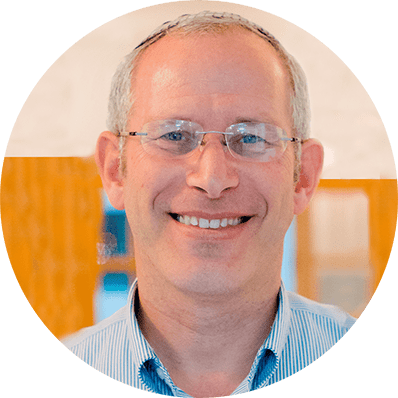

FROM THE EDITOR: Fall 2023
Fascinating. Infuriating. Uplifting. Complex. Boring. Inconsistent. Logical. Brilliant. Eclectic. Irrelevant. Compelling. Frustrating. Inspiring. Ancient. Contemporary. The Talmud evokes all the above, and more. I vividly remember my first encounter with Gemara. I must have been ten years old, and my family was in a bungalow colony in the Catskills. Rabbi Cohen taught Gemara to the older boys, of which I was not, but I asked permission to sit in and listen. I loved following the discussions and debates, even though I couldn’t read any of it and retained none of the content.


The Block Method for Teaching Gemara
By its very nature, teaching Gemara seems to defy everything we know about education. When we teach math, or language, or anything else, we start with the simple and easy-to-grasp aspects of the study area and gradually increase the level of challenge and difficulty. For example, we begin with addition and slowly move on to subtraction, multiplication, and division. We certainly don’t touch algebra until these are firmly in place. One couldn’t imagine a math class that requires knowledge of Pythagoras’ theorem presented to a class that has not yet mastered multiplication.


The Puzzling Talmud
A sixteen-year-old American Jewish day school student named Brandon (a self-chosen pseudonym) reports that he likes studying Talmud. What does he like about it? “I like the process,” he says. “It is kinda like a puzzle, that you have to get each word, and fill it in so it creates the whole text.” Brandon approaches his study of Talmud knowing that it’s going to be hard. Every word might take some effort to decode. Eventually, however, he can put it all together.
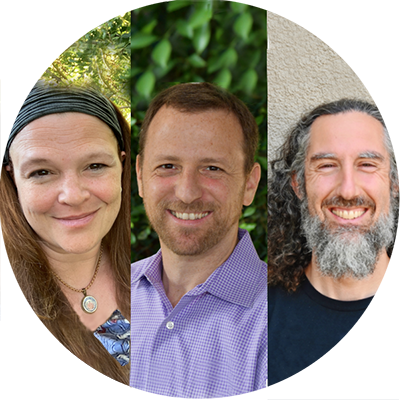

A Multidimensional Approach to Teaching Rabbinics
Pressman Academy is an early childhood through 8th grade school in Los Angeles serving a religiously diverse group of students. The school’s Judaics program, which includes Hebrew language, Jewish history, Tanakh, and daily prayer, affords a maximum of two weekly periods to teaching Rabbinics (in grades 5-8), presenting a significant challenge of what to include and how to approach it.
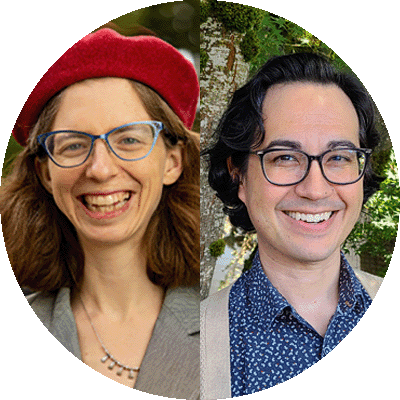

Replacing Relevance with Relationship
A relationship to Talmud study is highly valuable to those who possess it. Few other activities manage to combine elements of intellectual inquiry, spiritual questing, and moral development in the almost alchemical way that the study of Talmud does. And yet, there are a number of hurdles students must overcome in order to develop an independent relationship with the Talmud. First and foremost, studying Talmud in the original Hebrew and Aramaic can feel scary to the uninitiated. Second, the logic of the Talmud is foreign to students at first. Finally, students may wonder what a text from 1500 years ago might have to say to them.
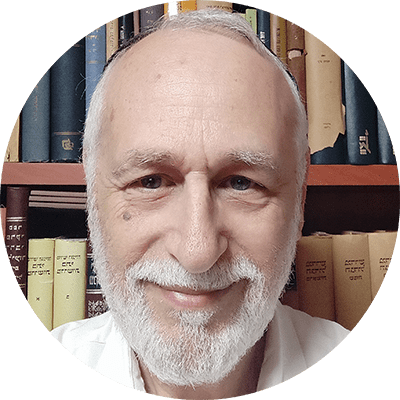

Teaching Talmud in Secondary Schools: Masorah and Modernity
Teaching of Talmud in traditional secondary schools has been a conundrum from the day it was decided to teach Talmud as part of the standard Jewish studies curriculum. Programs for yeshiva high school graduates in Israel and around the world are consistently populated by an overwhelming percentage of students who, even after six years of multiple weekly hours of Talmud instruction in secondary schools, are helpless in the independent study of Talmud. These students are successful independent learners of advanced mathematics, natural sciences, complex technology, and even humanities, but in Talmud, they require an embarrassing degree of spoon-feeding.
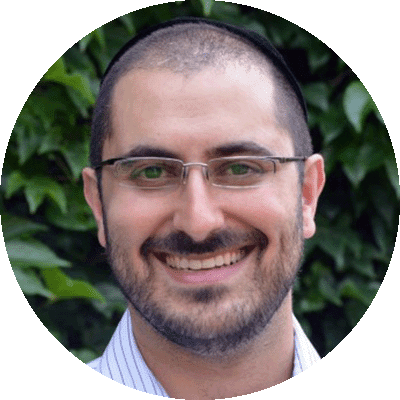

Pre-Mishnah: The Missing Link
I teach 5th grade Judaics at Fuchs Mizrachi School, a Modern Orthodox Zionist school (Cleveland). Upon entering the world of Torah SheBe’al Peh, a student is first greeted by the Mishnah—a complex and sophisticatedly interwoven compendium of Jewish law and wisdom. Students struggle to understand its relevance, how and why it was created, and its importance to the scope of their Torah learning. They ask, “Why are we learning Oral Torah?” and “Why should I care?” but underlying those questions is the more fundamental, “What is the Oral Torah?” While some choose to address this piecemeal over the span of many years, I believe that it is important to address it up front, in an organized manner.


Anatomy of a Gemara Lesson
You have been there, too, right? You thoroughly prepared a Gemara lesson by formalizing how you will explain the shakla vetarya, you concocted attention-grabbing examples and cases, charts to organize the conflicting opinions, and provided a translation and question practice worksheet. You slowly read the Gemara aloud while students annotated the text or completed linear translation sheets. You patiently and clearly explained the concepts and reasoning on a first, second, and even third pass of the reading.
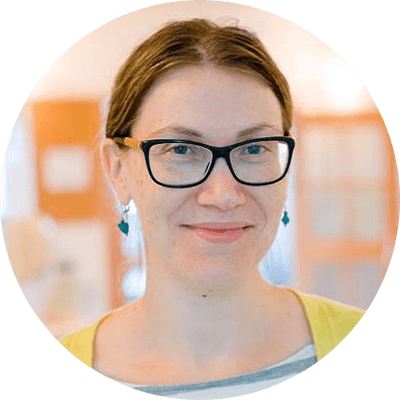

Making the Case for Agada
The rabbis of the Talmud were intentional and thoughtful educators; an example of their consummate pedagogic skill is the way they interspersed narratives into their halakhic writings and teachings. Their use of agadot is an effective teaching tool because, simply put, people love stories. We evolved to tell stories, to become compelled by stories, to connect to the characters, drama, and tension in stories. Stories draw in our students and they have the power to make them care.


Tokhehah Leshem Shamayim
One day, in a 7th grade lesson during our unit on tokhehah (the mitzvah of rebuke), a student shouted out from across the classroom: “This is tokhehah leshem shamayim!” In this moment, with one eloquent and original phrase, this 7thgrader had connected the learning in our current unit of tokhehah with the concept of leshem shamayim (for the sake of heaven) from our previous unit of mahloket (disagreement). This delighted us because it showed that the concepts of mahloket we had been teaching were not just retained for the duration of our unit, or for a test, but were concepts students internalized, held on to, and could apply to new settings and used in unique ways.
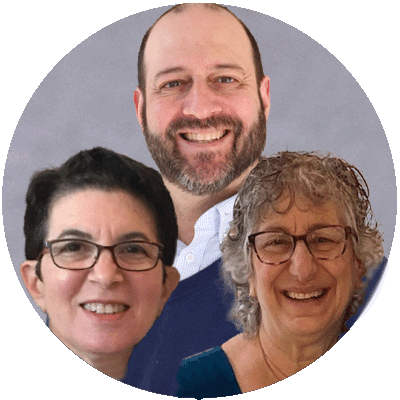

Extending the Reach of Rabbinics
Morah M.’s 5th-grade class is curating a museum exhibit showcasing artifacts that represent family legacy and tradition. The items are described on a placard that explains: These candlesticks were my Bubby’s and now my mother and I use them for Shabbat. When I chose them, I thought of the story about R. Yehuda HaNasi that we learned (Ketubot 103a). Before he died, he told his family that they should continue to set the table the same way, keeping the lamp in its usual place. We’re sort of doing the same thing when we use Bubby’s candlesticks.


Talmud Education for Diverse Learners: Taking the “Long but Short” Road
Teaching Talmud to weaker students can present many challenges not typically found in traditional Gemara classes. Navigating a text in a foreign language, especially one with the unique structure and rules of the Talmud, can be daunting for those grappling with language-based difficulties. Educators must realistically decide which teaching method—skill-based or discussion-based—will best set diverse learners up for success, and how demanding a Talmud course should be for students not likely to pursue this type of Torah learning in the future.
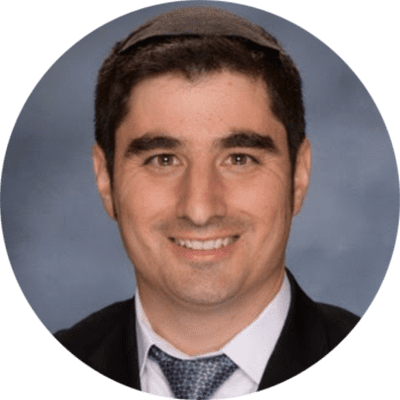

Teaching Talmud Guided by Essential Questions
Standing at the edge of the sea can be an awe-filled experience—the incomprehensibly vast expanse of water with no end in sight is both inspiring and intimidating. We would not consider entering it, whether to swim, sail, surf, cruise, or dive without proper preparation. Similarly, the Sea of Talmud is rich with information, personalities, debates, and much more. It, too, can inspire and intimidate with its vastness and complexity, and we should not expect our students to be able to jump in and navigate it without context and a roadmap. To prepare our students as they embark on their journey into the Oral Torah, we need to define our goals and our strategies for achieving them.
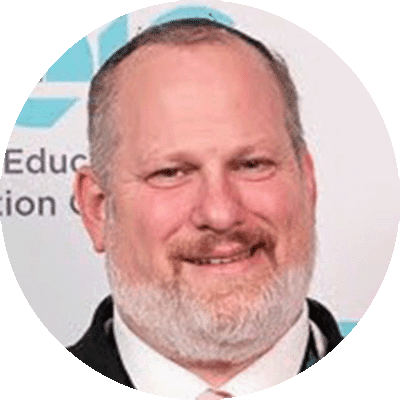

An Alternative Approach for Teaching Talmud
In my first year of teaching, I taught a student whom we will call Yossi. From the time he started 1st grade reading groups, Yossi was placed in the lowest track. This pattern persisted through my 11th grade Gemara class. A few weeks into the first semester of 11th grade, Yossi approached me after class to ask me a burning question which he was embarrassed to ask in front of his peers. He asked, “Who is Rabbi Baraita?” I said, “What do you mean?” He responded, “My past teachers kept explaining ‘the Baraita says…’ Who is Rabbi Baraita and why is he referred to as the Baraita?”


“Wait, What?!” Teaching Jewish Law in a Reform Jewish School
As a teacher at Rodeph Sholom School (RSS), I have for some time considered what it means to teach Torah SheBe’al Peh in a Reform Jewish independent school. What I offer here is a taste of how my colleagues and I have strived to shape our 7th grade Rabbinics unit so that it is aligned with our school’s mission and meets the needs of our specific community of learners. And while every school is unique, I am hopeful that the insights I’ve gained from teaching one unit on the development of Jewish law are instructive for any Jewish day school grappling with teaching Torah SheBe’al Peh.


A Learner-Centered Approach to Teaching Gemara
Traditional methods of teaching Gemara, such as hevruta learning followed by an interactive shiur, have stood the test of time. When teaching beginner students, however, this approach is less common, given their lack of prior knowledge or skills. As a result, many teachers prefer a frontal approach, perhaps projecting the daf on the SMART board and presenting the text phrase-by-phrase while students take notes between the lines of the traditional Vilna text. If hevruta time is used, it is often for the students to review material rather than for them to try to decipher the text. In this article, we are going to propose a method for using a modified version of the traditional approach which can be used for learners starting out on their Gemara learning careers.
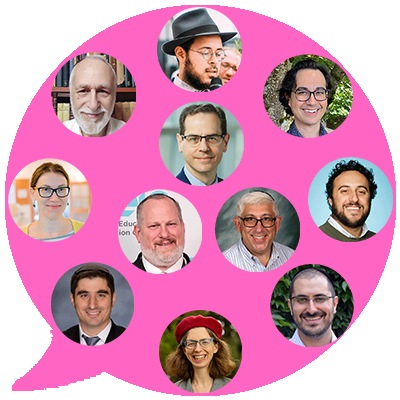

Why Learn Talmud?
Some of the articles in this issue describe the joy of studying Talmud, others break down the complex processes to make it more accessible to students or to enable the students to engage with it meaningfully. And just to make sure that we covered the bases of both the how and the why of Talmud study, we asked our authors to weigh in separately on the question: “Why do you think that day school students should be learning Gemara/Rabbinics?” We invite you to join that discussion.
Fall 2023 Journal Credits
JEWISHEDUCATIONALEADERSHIP
Jewish Educational Leadership is a publication of The Lookstein Center for Jewish Education of Bar Ilan University.
Chana German, Executive Director
JOURNAL STAFF
Hyim Brandes | Editor
Zvi Grumet | Editor-in-Chief
Chevi Rubin | Editor
Shani Sicherman | Copyeditor
Please send correspondence regarding journal content to zvi@lookstein.org.
The Lookstein Center publications present a variety of viewpoints. The views expressed or implied in this publication are not necessarily those of the Center.
EDITORIAL OFFICES AND ADVERTISING
The Lookstein Center for Jewish Education
Bar-Ilan University
Ramat Gan 5290002 Israel
Tel: +972-3-531-8199
US: +1-646-568-9737
www.lookstein.org
© 2023 by The Lookstein Center for Jewish Education.
All rights reserved.





